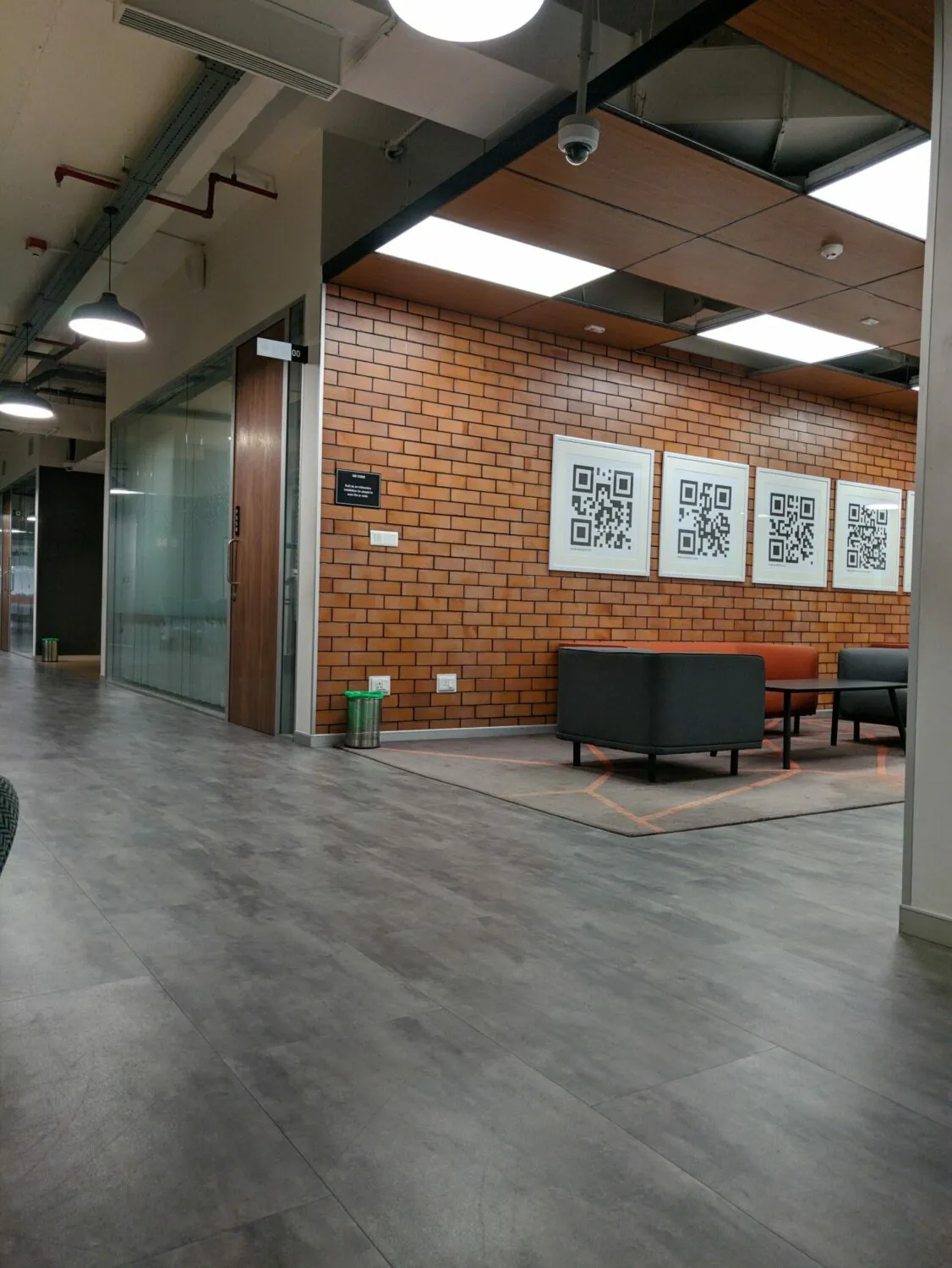But there’s also a more proactive way of lighting the touch paper, which is to actively seek out new connections through networking. At the start of your career, or when you’re entering into a completely new sector, increasing the size of your professional network is like depositing money into a savings account – there’s a compounding effect that will enhance your chances of making valuable connections as time goes on. So the sooner you start “investing” in your connections, the better.
The benefits of networking
Having an address book stuffed with contacts might be a worthy goal, but have you ever asked yourself why it’s worth cultivating? It might be easier to think of the answer by turning it on its head, i.e. what would running a business be like if you had no contacts, no connections? Every time you needed to find a supplier or partner, you’d be starting from zero information. If you wanted to push your new product or service to influential people or potential clients, you’d have to start your research on Google and hope for the best. It’s easy to see how having some connections starts to make life easier, but having more of them can start working to your advantage. In summary, the benefits are:
- Access to opportunities. A broader network increases your exposure to job openings if you’re an individual rather than a business. But it’ll also be easier to find partnership possibilities, investment opportunities and potential clients. People in your network might share opportunities with their connections before they become publicly available.
- Knowledge and expertise sharing. A large network gives you access to diverse perspectives, industry insights and specialised knowledge. As we mentioned above, even your competitors (who you’d think would hide their insights for a business advantage) will often spill the beans privately or publicly, as the thriving conference scene proves.
- Referrals and recommendations. Looking for a freelancer or thinking about pitching to a potential client? A quick word with a trusted contact could find the perfect person, or indeed warn you about habitual late-paying clients or those who are more trouble than they’re worth.
- Problem-solving. When you encounter challenges, a large network means you’re more likely to know someone who has faced similar issues or has the expertise to help.
- Visibility and reputation. Don’t forget that as your circle is growing, you’re also making yourself present in other people’s circles. So you could be the recommended supplier or partner when someone else asks about services you provide.
- Business growth. A strong network supports business growth through sales leads, partnerships and access to funding, talent or suppliers. The larger your network, the more potential touchpoints you have for expanding your business reach.
- Connections are forever. A connection made today might bring nothing tangible tomorrow or even next year. But you just never know when that contact is going to reach out to you, or for you to identify an opportunity where they could help you.
Our eleven tips for networking success
If you agree that networking has fantastic benefits, it’s time to start making moves towards securing those connections. Here are our tips for making it happen
1. Start with clear goals
As with anything in business, you need goals. Goals are arrived at through consideration, and weighing up the costs and benefits of an action, so they should be realistic and achievable to start with. But once you’ve set those aims, along with a timeframe in which to reach them, you’ve got a target to measure success or failure against.
Your goals can be whatever you decide them to be, which means you can be as conservative or ambitious as you want. But don’t just focus on the number of connections – look at the quality and rationale behind them. For example, do you want to make business partnerships, share knowledge, or simply go for sales leads? You can use this information to decide whether a given connection counts towards your goals, or whether it’s just another name in your list.
You can then start to think about ways in which you’ll attempt to make those connections, such as conferences, talks, exhibitions, dedicated networking events or online meetups. We’ll be covering some of these later in our list.
2. Perfect your elevator pitch
There’s no end to the gems of information that business gurus come up with, and a lot of the time, they are only useful to self-styled business gurus themselves. But the so-called “elevator pitch” is one that really is worth looking into. If you’re unfamiliar with the term, it’s basically a bit of a spiel that you can roll out if you’ve got 30 seconds with a potential client, partner or supplier (e.g. if you’re going up a few floors in a lift, hence the name).
With an elevator pitch, preparation is everything. You need to condense your business down to its bare bones, then construct a paragraph of dialogue that’ll summarise it and inspire the listener to want to know more. For that, you need to think in terms of benefits. What can you offer this person’s business that they might not have thought about before. How can you address a pain point or save them time or money?
It really is worth crafting this, and practising it so that when you deliver it, it sounds completely natural. If you believe in your business, that shouldn’t be too hard. You can then deploy your elevator pitch whenever you get the chance – it’s not just for elevators.
3. Research before you network
In many networking situations, there’s a wealth of information available before the event from which you can glean introductions and knowledge. If you’re attending an exhibition, be that as a visitor or an exhibitor, study the floor plan and look at which businesses are where, so you can prioritise meeting them.
At some events, there may also be a list of attendees, with names, positions and affiliations, which is a gold mine of information. Make sure you too are on such lists, with updated and accurate information, because there could be people seeking out your connection.
4. Master the art of exhibition networking
Experienced exhibition-goers know exactly what they’re doing. They’re not just there to absorb information – they’re there to transmit and to connect. A few quick tips are:
- Arrive early when stands are less crowded – you’re more likely to get someone’s undivided attention.
- Use the exhibition app to schedule meetings – sometimes, there’s an app that lets you book a slot with your target. If you don’t do it, someone else will, so take advantage and get in early.
- Visit stands strategically, not randomly – don’t wander around fishing for connections. You’re there with a purpose and with goals, so plan your route around the space so as best to maximise opportunities.
- Use coffee breaks and evening receptions to chat more informally with people. It’s surprising how often these “chance” meetings (of course, you can plan them) end up being key wins at an event.
5. Make your exhibition stand into a networking hub
If networking is a key objective of your exhibition, make sure your stand reflects that. It has to be as welcoming as possible, giving people reasons to pop over just to get that all-important first contact. Have seating and standing areas, where you can talk one-to-one or do demonstrations, and make sure there’s plenty of things to give away, such as leaflets, freebies or complimentary tea and coffee.
No matter how good your space is, it’s all for nothing if the people manning the stand are unattentive, unknowledgeable and untrained. Getting them up to speed with your offerings and how to present them is crucial. Make sure they know what they are authorised to do, too. Can they make deals on the floor, or is there a hierarchy or department that they need to refer leads to?
6. Don’t forget digital
LinkedIn is the clear market leader when it comes to B2B networking. Simply having a profile there is not enough, though. You need to be active, and to engage with others on the platform. Don’t just post random stuff – make sure you add something useful to any conversation. And be a conversation-starter yourself, so people will respond in kind.
There are always other platforms, too, such as industry-specific business groups, Facebook groups and local networks. They’re not necessarily quick and easy to contribute to – you do indeed to be authentic and valuable – but it can be a good way of making targeted, focused connections.
7. Listen more than you speak
Welcome to Focal Exhibitions’ life skills class. Lesson 1 – people like to be listened to. You have undoubtedly been in many situations where you can tell that the person you are talking with is only interested in how quickly they can get you to part with your money so they can move onto the next target. It’s a huge turn-off, the equivalent of spam emails and equally as effective.
The thing is that listening to other people, rather than dominating the conversation, is actually beneficial to you. It gives you insights into their needs and tastes, and lets you plan follow-up questions that show that you were paying attention. It also just makes you a more rounded, educated person in your industry. There’s a time for speaking and a time for listening, and it’s worth developing an instinct for where they begin and end.
8. Follow up within 48 hours
At busy events like exhibitions or networking events, people will have met dozens of other people, and it’s easy to fade into the background once the buzz of the occasion has died down. Just send a quick email thanking them for their time and taking things to the next step. Don’t be too ashamed to remind them who you are – bring up a quirk of the conversation if it helps to jog their memory. It helps to end your email with a question to keep the conversation going.
9. Join professional associations and local groups
As well as local digital forums, there are also professional and local groups that meet face to face. These often have a social element and that’s a perfect way to break down barriers and make valuable contacts – and perhaps even friends. Find out about your local chambers of commerce or BNI groups, but also put your feelers out for other groups. They might have a social media element that’s a good way to get an in.
10. Take remote networking seriously
There are always online networking events that might involve appearing on camera or on microphone, so make sure you have a setup that maximises your potential there. Nobody regrets investing in a good camera, microphone and headphones, rather than the ones in your computer or phone. Headphones are much better than your laptop’s speakers, as they’ll eliminate echo and feedback.
Set aside an area with a professional looking backdrop rather than relying on background filters, which can look odd at times. Learn about etiquette, such as not talking over people, but do make sure you are an active and useful contributor to any conversations.
11. Give before you receive
Finally, remember that any connection needs to be mutually beneficial. People are looking for you to give them something they don’t have, so don’t be shy about giving it up before they’ve given you what you want.
Offer your expertise freely, and if you have a contact that you feel could assist another contact, introduce them to each other. That’s the purest, most rewarding sense of networking, and it’s something that makes you a valuable member of any network. Even if you don’t think you can get anything immediate or tangible from a contact, offer them your support and let them have your details. Business connections often come from the strangest and most unexpected of directions, and it all goes to show the value of a strong, diverse and active network.











































































